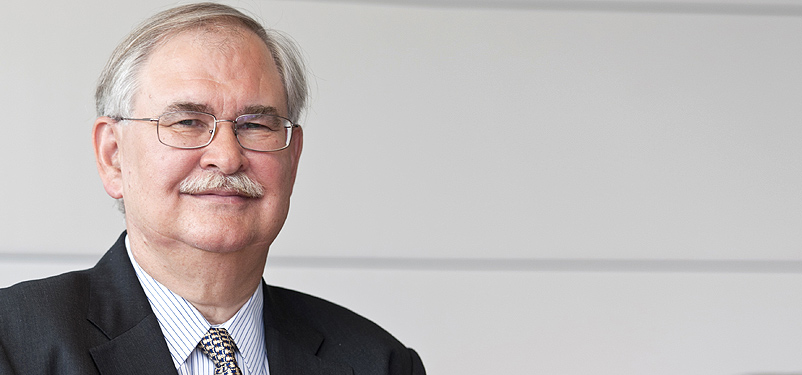A BLUEPRINT FOR EUROPE.

Robert C. Almanas, Head of International Strategy and Alliances at SIX Securities Services outlines his thoughts on bringing down barriers and building an optimal trading environment in Europe.
Following several years of volatility after the global financial crisis (GFC), Europe’s markets are slowly climbing back from the brink, with most venues seeing a consistent uptick in trading volumes. While this sign of recovery will reassure Europe’s politicians, the continent’s market infrastructures are still in far from optimal conditions and we could face the prospect of a real-economy recession in numerous markets. As competition heats up from rival trading blocs such as North America and Asia, I believe that Europe must reform and streamline its financial markets before it can claim to have a best-in-breed trading environment.
As it stands, cross-border trading on the continent continues to prove expensive and inefficient, as Europe’s markets lack cohesion and common infrastructures. Despite having been identified more than a decade ago, we have yet to see the infamous Giovannini Barriers truly dismantled. These are a series of fifteen factors identified by a group of financial market experts which hinder the integration of EU settlement and clearing infrastructure, and so the efficiency of European markets in general. To achieve its goal of becoming a truly global economic power, the EU must create an open and transparent market, which provides access to non-EU countries and organisations based on clearly defined rules. I also feel that protectionism and any foot-dragging on compliance must be sanctioned by European authorities.
Given its key role in helping the European financial markets overcome the GFC, the input of the post-trade sector will be pivotal in the drive for change and efficiency. Already, many recent regulatory changes have targeted the clearing and settlement landscape, seeking to reinforce these risk mitigation systems, and harmonise Europe’s existing infrastructures. Much more can, and must be done. Below, I’ve listed some of my thoughts on how we as an industry can contribute to creating a better post-trade environment in Europe.
Pool collateral (virtually)
For Europe to be considered as a single, unified market, the location of physical assets must become irrelevant, as long as they are within the continent’s borders. This will become even more important as demand for high quality collateral grows due to enhanced concentration and systemic risk mitigation approaches, and it becomes harder and harder to find. For this reason, Europe’s post-trade infrastructure (such as CSDs and global custodians) need to virtualise their collateral pools, ensuring that whatever high quality collateral already exists is mobile and available. This approach can also help to minimise collateral overhang and concentration risks, while addressing many of the inefficiencies that are inherent when securities are being transferred across systems.
Avoid dilution
Because of the essential role that it plays in lubricating our financial markets, collateral is a crucial element in the risk management toolkit available to the post-trade sector. For these reasons, its quality must not be diluted. We believe that all collateral must be held to four core values – it must be simple, liquid, easy-to-value and high quality. If these values are diluted by collateral management service providers such as CCPs, CSDs and global custodians, we could run the risk of another financial crisis.
Rationalise Europe’s clearing layer
There is no avoiding it: Europe has too many CCPs. With more CCPs than EU member states, we now have a situation where risk mitigation is not optimised and institutional investors are being forced to connect to multiple trading partners, increasing the cost for them of doing business. The introduction of interoperability to more European markets would help with this issue, while a wave of mergers and acquisitions could play an important role in reducing the number of active CCPs. We are already seeing this process commence, as bigger, cross-border CCPs that operate in multiple markets acquire smaller rivals. EMCF and EuroCCP recently merged to become EuroCCP NV while SIX x-clear finalised its acquisition of Oslo Clearing in May.
Mandate interoperability
At this point in time, only two countries in Europe, the UK and Switzerland, have embraced interoperability for their clearing layer, despite the obvious benefits this approach can provide to market participants. When an institution trades across multiple venues that have interoperability agreements in place, it can then choose to consolidate its flows through its preferred CCP, gaining operational efficiencies and the possibility of volume discounts as a result. The increased competition fostered between CCPs by this approach benefits the entire market as it encourages them to improve the quality of the services they provide, drives innovation and can lower clearing fees. Given these benefits, it would be valuable to the European markets if EU regulators were to urge national regulators to open up their closed siloes.
Accept the cost of compliance
Post-GFC, the European capital markets have had to contend with wave after wave of regulation, as authorities seek to avoid the mistakes of the past. Banks are now subject to far more stringent capital requirements, the middle and back offices have additional obligations while compliance and IT departments at institutions of all sizes are working overtime. Europe’s post-trade sector is no stranger to these regulatory demands, as changes such as T2S and CSDR have forced post-trade service providers to invest in their systems and update their procedures. These reforms are expensive and time consuming for the markets, however, they are essential to ensuring that Europe’s financial markets are robust enough to survive any future crises. Although it may prove tempting, post-trade service providers must not react to increased compliance costs by automatically passing them on to their own clients. Instead, these increased expenses should be seen as the cost of protecting and enhancing one of the world’s biggest financial markets.
© BestExecution 2014




